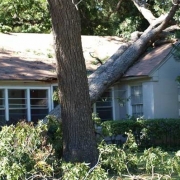Mysterious Outbreak at Houston School Scares Parents, Teachers
Houston, TX – It is a medical mystery and a parent’s nightmare: Something is making people sick inside a Houston middle school. So far, no one knows what it is.
The school district says the air is clean and that children and employees should show up for school. But an increasing number of parents and teachers say they are afraid to go inside the building or to send their children there.
Since the first day of school on Aug. 27, more than 15 teachers and seven custodians have suffered from severe headaches, chest pains, breathing problems and vomiting while inside Francis Scott Key Middle School. Last Wednesday, several teachers were taken by ambulance to a hospital. Others — under doctor’s orders — have missed days of work.
Some parents say their children are also ill and have refused to send them to school until the source of the illness is found. So far, no students have been taken to the hospital. Houston school district officials insist the 50-year-old school building is safe. They say tests conducted at the school have failed to detect any mold or other air contaminants.
“If at any time we feel that there really is a specific danger, absolutely we’ll shut the building down,” HISD Superintendent Abelardo Saavedra told a group of teachers and parents at a school board meeting last week. “But until we find evidence that there is a serious problem out there, we’ll continue to teach children out there.” That response did little to soothe the mounting fears and frustrations of teachers and parents who say the school district is ignoring their concerns.
“What do they qualify as serious? Someone passing out and dying?” asked Tonya White, who has two children at the school.
Symptoms at Francis Scott Key Middle School
The school with 600 students is in a working-class neighborhood where 95 percent of the students are eligible for free or reduced lunch. The strange illness first surfaced in late August, when science teacher Ronald Jacobs began to cough and wheeze and had trouble breathing after spending time inside a classroom. The symptoms went away when he left the room, but came back more violently when he returned. Staff called 911 when his throat tightened and his eyes swelled. That room had been closed during the summer because of suspected mold, Jacobs said.
Jacobs said he failed a pulmonary test conducted by his own doctor, and hasn’t yet been able to return to work. Two other teachers also fell ill the first week of class. Over Labor Day weekend, seven custodians got sick during a routine cleaning and had to be taken to the hospital. Last week, two more teachers left by ambulance on Monday. Two days later, 11 teachers got sick, and at least six were transported by ambulance.
The symptoms include watery eyes, shortness of breath, elevated blood pressure, skin rashes and vomiting, said Gayle Fallon, president of the Houston Federation of Teachers. “My people are getting sick big time,” Fallon said. “The district can’t find what’s wrong, but something’s wrong.” The union sent samples of ceiling tiles, carpet and a rope from the school to an independent lab for analysis. That report found the presence of aspergillus and pencillum — both forms of mold. A lab contracted by the school district also found both mold forms, but concluded the school’s air quality was acceptable.
“The district has invested a lot of time, effort and money in independent outside testing of the building to determine what is making people sick,” district spokesman Terry Abbott said. “So far, all of the scientific tests show that there is nothing wrong with the building.”
The Houston Health Department also conducted an inspection at the request of a city councilman, said spokeswoman Kathy Barton. That inspection also gave the building an all-clear, although inspectors recommended closing two classrooms — including Room 305.
The Houston Fire Department’s Hazardous Materials Response Team also monitored for chemical hazards and found none — but noted it did not test for airborne microbial agents. But older buildings sometimes have indoor air quality issues, said Dr. Robert Emery, associate professor of occupational health at the University of Texas School of Public Health. In most cases, he said, the problem can be traced to poor maintenance, water intrusion or inadequate ventilation. The teachers’ symptoms are consistent with air quality issues, he said. “If I were coming in from the outside and had a 50-year-old building with these concerns, that’s what I would look at,” Emery said.
School Board Meeting
Parents and teachers who crowded Thursday’s board meeting say the district should take more aggressive steps to protect the children and staff. “Something has to be done at Kelly. You have to do something for the children,” said sixth grade teacher Yolanda McCray-Taylor. “Something has to be done, not next week, not next month. Today or tomorrow.” They want the district to relocate classes until the mystery is solved. Some parents say children should stay out of school altogether. White has kept both her sixth-grade son Gary Harris and her seventh-grade daughter Keva Provost, home since last Thursday. Since school opened, White said her son has had headaches and a full-body rash.
“Their health is first. If I have to do home schooling, then that is something I have to look into,” said White, who owns an insurance agency. “Even if they go to school, when their head is hurting, their skin is hurting, are they really learning? When there are ambulances outside, are they really learning?”







